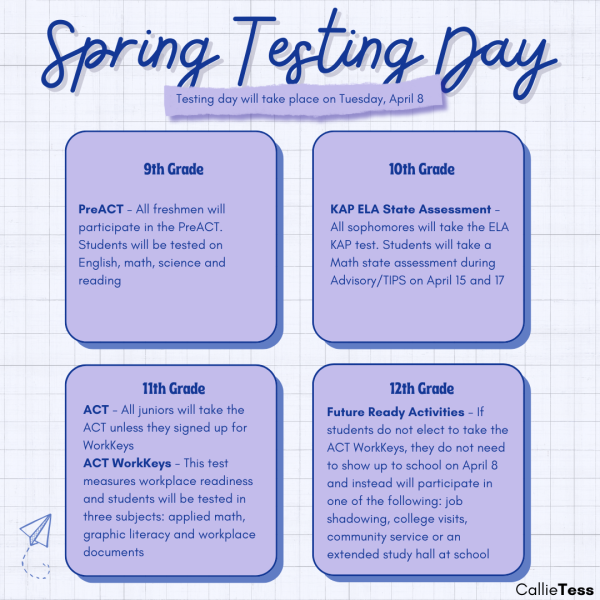In Favor of Four
four-day school weeks would improve student retention and well-being
After almost two years of online and/or hybrid learning, five day school weeks are starting to hinder students’ long-term retention and well-being. Especially with the since implemented block schedule (three or four 90-minute classes as opposed to seven 50-minute classes), students simply can’t focus on the content. By the time the weekend rolls around, students are so burnt out, they can’t refocus over the two days.
A potential solution: four-day school weeks. During COVID, school districts across the country, including 25 in Kansas and 141 in Missouri according to the Kansas City Star, shifted to four-day school weeks and saw immediate improvements in the problems previously mentioned.
Junior Annousha Hashmi said while four-day school weeks would be an adjustment, they would ultimately alleviate stress and allow her time to relax and be a teenager.
“I know a lot of school districts shifted to a four day school week during the pandemic, and it helps a lot,” Hashmi said. “I think if students could have that extra day to unwind, spend with their friends or catch up on anything they might need to, it would be easier to focus on those four days, because then they know they will have three days to relax.”
Algebra teacher Jill Bellville also said four-day school weeks would benefit her personal life.
“There’s not enough time to do everything we want to do during the weekends,” Bellville said. “If we want to hang out with one side of our family one day, and the other side of the family another day, there’s no time to hang out with friends or get things done. So it just seems like there’s never enough time in the weekend, so four-day school weeks would definitely help me schedule family events and being able to have a good time.”
But even if the district community collectively agrees that four-day school weeks are worth trying, implementing a change of that scale is a long process. Assistant Principal of Curriculum and Instruction Anne Kastelic said in order to get four-day school weeks approved by the board, administration would have to make sure they’re structured in a way that abides by Kansas’s education laws.
“We’d also have to watch ‘seat time minutes,’ because that’s a mandate from the state, in terms of how long students have to be in classes,” Kastelic said. “We’d have to really look at what the law says about hours, it’d have to be board approved– it’d be a very long process.”
Developing a schedule that follows the education laws and benefits students’ learning is a tall order, but not impossible. If the district ditches the block system and reverts back to an all-seven format (including TIPS or Academic Time), four-day school weeks start to seem more reasonable.
“It’d be interesting to see what it’d be structured like,” Kastelic said. “We couldn’t do four classes in a day — students would be in classes for over two hours; that’s not good for focus and attention. Nobody can focus for that long; there’s a lot of data that tells us that, so we’d have to restructure what classes kids attend.”
Alongside restructuring the school day, it’s also important to consider the effects a four-day school week could have outside the classroom. Hashmi said four-day school weeks could pose unique challenges for the community.
“There are a lot of issues, like finding childcare for younger kids and providing meals because a lot of students rely on their school to have one staple meal a day,” Hashmi said. “But if we could restructure the infrastructure to cultivate this sense of unity — like ‘we’re together as a country, we’re going to help support you’ — and put in place free or reduced lunch pickup programs, not only would students benefit, but it could also create jobs and service opportunities.”
Blue Valley has the funding and resources to combat these problems and try a new system that could tremendously benefit students and staff satisfaction.
“I think Blue Valley, as a school district, could definitely [implement four day school weeks] because of the area we’re situated,” Hashmi said. “And we could do a trial model of shifting just the high schools and seeing how they do. So even if we don’t put the elementary school-aged kids in a four day school week model, we could try it with older students who are able to drive, because a lot of us have cars. So we’re in this really unique position to try this model in the state of Kansas.”












